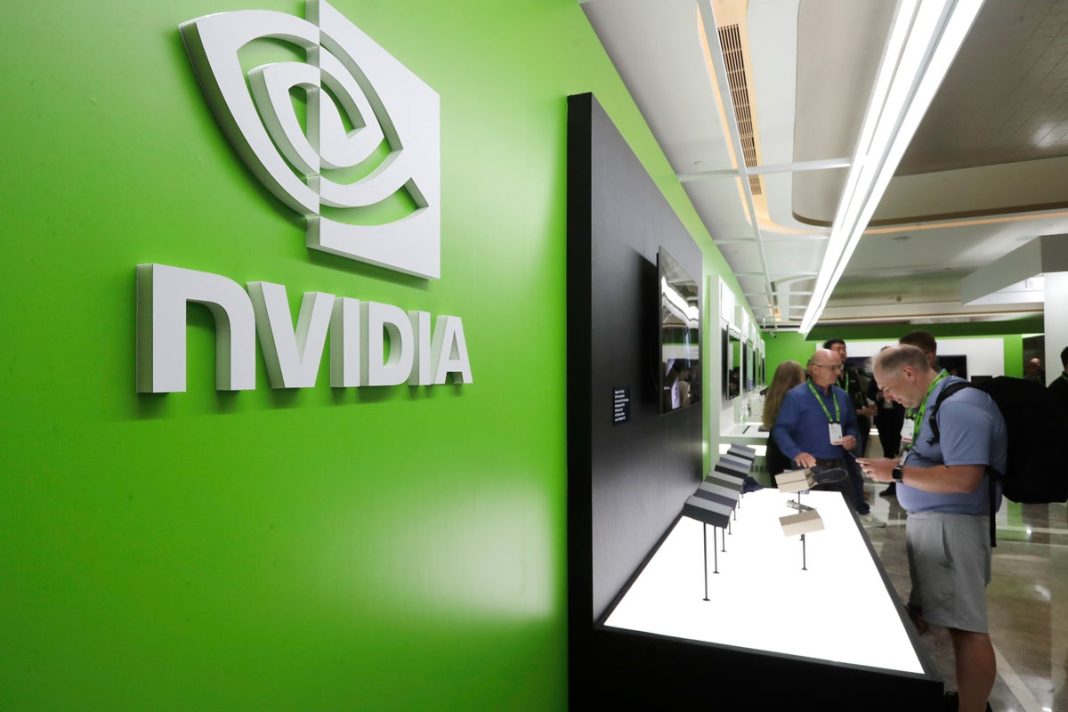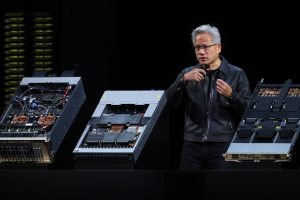Key Takeaways
- Nvidia’s earnings report will test Wall Street’s massive AI investments amid bubble concerns
- Despite 7.9% November drop, stock surged 1,200% over three years
- Company faces margin pressure despite $500B in chip bookings through 2026
- China restrictions and major investor bets against Nvidia add to uncertainty
Wall Street’s massive artificial intelligence investments face their biggest test this Wednesday as Nvidia prepares to release its earnings report. The outcome could determine whether the AI boom has solid foundations or is heading for a bubble burst.
Bubble Fears and Major Investor Moves
Three years after ChatGPT’s launch, concerns are growing that the AI revolution has outpaced business fundamentals. Industry leaders point to “circular deals” where partners artificially inflate revenues, adding to bubble risks.
This apprehension has triggered significant divestments. Peter Thiel’s hedge fund sold its entire Nvidia stake last quarter, while SoftBank CEO Masayoshi Son shifted investments to OpenAI.
Nvidia shares dropped 7.9% in November despite an astonishing 1,200% surge over three years. The broader market declined 2.5% during the same period.
“With every quarter that goes by, Nvidia earnings become more important in terms of clarification on where AI is moving and how much spending is being done,” said Brian Stutland, chief investment officer of Equity Armor Investments.
Strong Demand Amid Growing Challenges
Despite bubble concerns, demand for Nvidia’s processors remains robust. Cloud giants including Microsoft are investing billions in AI data centers.
Nvidia CEO Jensen Huang revealed last month that the company has $500 billion in advanced chip bookings through 2026.
The company is expected to report a 56% revenue jump to $54.92 billion for the August-October quarter. While impressive, this marks a slowdown from previous triple-digit growth rates as comparisons become tougher.
“The old Wall Street adage ‘one stock does not a market make’ – that would be incorrect here,” noted Neil Azous, portfolio manager of the Monopoly ETF. “Nvidia has the ability to make a market.”
Bearish Bets and Supply Constraints
Not all investors are bullish. “Big Short” investor Michael Burry has bet against Nvidia, arguing that cloud providers artificially boost earnings by extending depreciation timelines for AI equipment.
Meanwhile, Nvidia struggles to meet chip demand despite annual product updates that make older models obsolete faster.
Contract manufacturer TSMC is expanding advanced-packaging capacity through 2026 to address bottlenecks. Nvidia is also developing more complex systems integrating graphics processors, CPUs, networking gear, and cooling solutions.
Margin Pressure and China Challenges
The rollout of Blackwell chips and upcoming Rubin processors has squeezed margins. Nvidia’s adjusted gross margin likely shrunk nearly two percentage points to 73.6% last quarter, though net income probably grew 53% to $29.54 billion.
Investors are monitoring how Nvidia’s $100 billion OpenAI investment and $5 billion Intel stake will impact its balance sheet. The company had $11.64 billion in cash reserves as of July.
China remains a significant challenge. U.S. export restrictions prevent Nvidia from shipping its most advanced chips there, and Huang confirmed “no active discussions” about selling Blackwell in China despite speculation about scaled-down versions.





